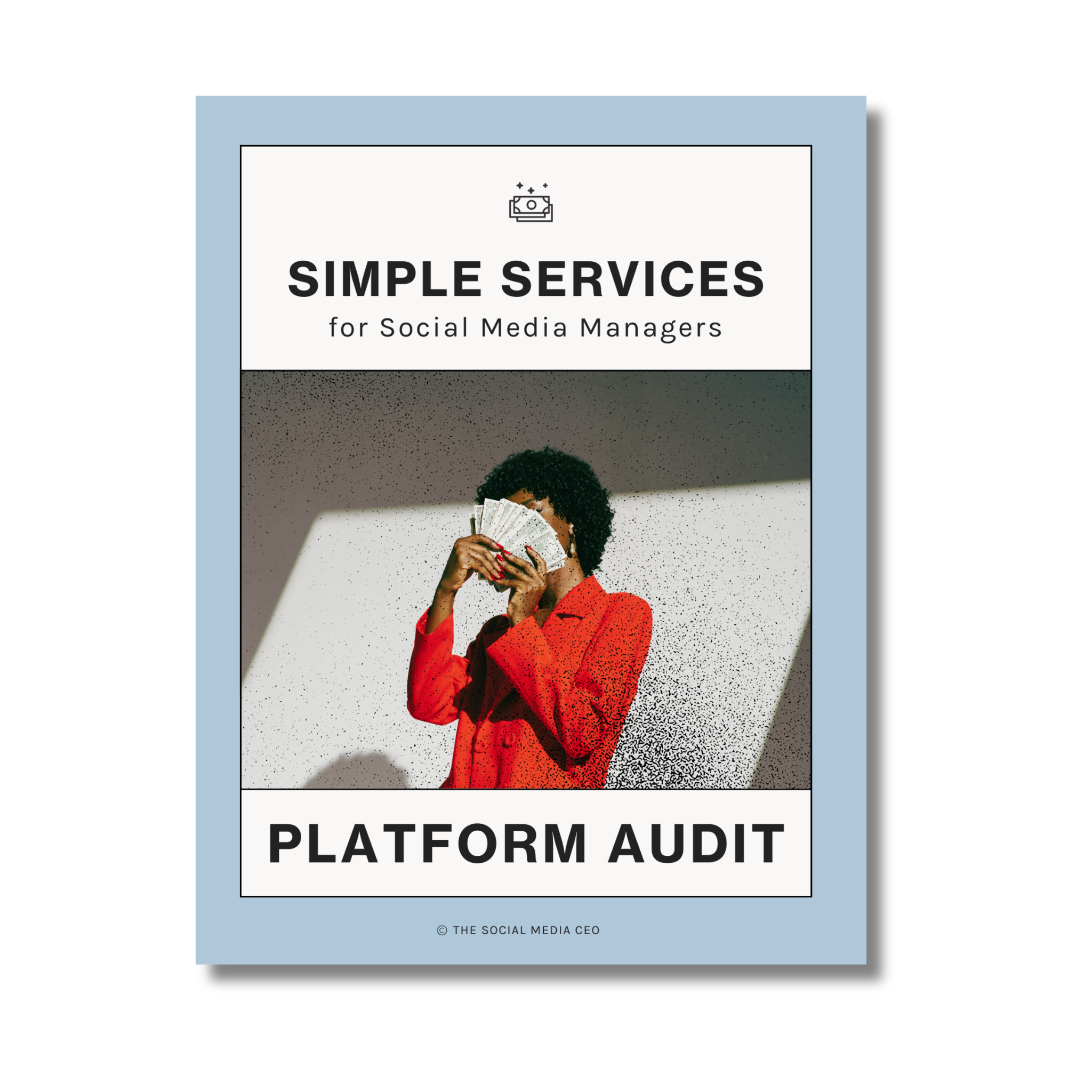One of the most fundamental responsibilities of a social media manager is measuring data.
Tracking and sharing these insights is extremely important if you want to retain your clients & keep them on your roster for a long time!
By clearly communicating how your social media efforts are helping your clients reach specific goals, they’ll have no reason to look elsewhere.
The question is, what’s the best way to do that?!
In our experience, most clients want to know how things are going on a consistent (weekly, monthly, quarterly) basis -- but they don’t need 25 pages of analysis for every platform, every month.
Pro Tip: Don’t waste your time, they aren’t going to read that.
Instead, keep things in your report focused specifically on your client’s KPIs (key performance indicators) and highlight the specific “measurables” you’ve built your strategy around.
For example, if one of their goals for Instagram was to drive more traffic to their newsletter, include a section on your report that showcases your efforts toward reaching that goal.
Each month, we use Later’s Pro Analytics & our Reporting Template to deliver a branded Instagram report that’s simple for our clients to understand & gets straight to the good stuff.
This report provides a complete picture of what’s working & what isn’t -- highlighting strategies that were successful, data around what’s most important for the client, and closes with our observations along with ideas for improvement as we move forward into the following month.
Here are 5 things to include in your client’s social media report…

1 | Audience Demographics & Best Times to Post
Every business wants to know who they’re reaching & if it’s in line with their target demographic. Include a simple breakdown for each platform showcasing who these followers are — their age-range, location, gender, etc.
You can also highlight when those followers are most active on specific platforms. This will help your clients understand why you’ve chosen to post on certain days, at certain times -- not to mention, allow you to plan more impactful, perfectly timed social campaigns.
2 | Follower Growth
Consistent follower growth is a universal expectation for any business on social media.
WHAT DO WE WANT: MORE FOLLOWERS! WHEN DO WE WANT THEM: NOW!
Every month, you’ll share this metric in your report (AKA, “you’ve gained or lost “X” amount of followers). The key, however, is to include additional data or observations around why the account did or didn’t meet expectations. Don’t drop a random number without explanation. Instead, share your insights around what specifically could have impacted this metric over the last 30 days.
For example, if you noticed a larger than usual spike in followers on a specific day that month -- and you’re able to connect it to an influencer’s post mentioning the client the same day — share that in your report!
The spike clearly highlights how impactful the right brand mentions and partnerships can be. If this was a planned collaboration, it’s proof of success. If it was organic, you now have tangible data to leverage & up-sell a new service -- influencer marketing.
3 | Traffic & Conversions
Followers don’t mean anything if you’re not making sales or getting leads on a regular basis, right? And as a SMCEO, you know your social media efforts can be directly related to an increase in sales of a specific product or service, or help to grow your client’s email lists, even without 10k+ followers!
While a lot of clients will get stuck on the follower metrics, we all know the real magic happens when content converts…
-
Did a Facebook post drive new link clicks to a free offer and result in 100 new email subscribers?
-
Did a product tag in an Instagram Story result in 25 new sales?
Include those results in your report (& make it part of your strategy next month to repeat the stuff that worked!)
4 | Best Performing Content
We’ve all had that client who makes off-the-wall requests to post something that we know isn’t going to work well.
This is why it’s important to include the top performing posts, along with detailed notes on why this type of content worked, in every report.
This might include:
-
Posts with the most engagement
-
The posts that were saved & shared the most
-
The Instagram Stories with the highest completion rate, start to finish
By highlighting the kind of content the audience responds to best, you can focus on creating MORE of that, and hopefully avoid random requests (or at the very least, questions about why those kinds of posts aren’t working). Hint: they don’t work, because they aren’t “THESE” kinds of posts…
5 | Observations & Next Steps
The final section you’ll want to include in every report is an overview of your observations, along with your plan moving forward. Remember, you’re the expert, and based on what you’ve seen on the account in the past 30 days, this is where you get to express your thoughts on how to continue positive momentum and course-correct if something isn’t working.
This feedback shows your client that you’re “on top of it” and will help them to trust you have their best interest in mind.
Whatever’s included in this particular report -- you’ve analyzed it & created an action plan to continue improving & working toward their goals.
Essentially, it says “This month, <blank> worked well, so we’re going to keep doing it. <Blank> could be improved so we’re going to <action steps here> in order to move the needle…”
P.S. You can also include monthly data relating to hashtags, influencer marketing, paid ads, etc. Depending on the services you offer, the metrics you include on your client’s report will vary.
However, the 5 points we’ve outlined are absolutely essential for any social media manager who wants to send reports to clients!
MAKE SENDING REPORTS SIMPLE WITH OUR ANALYTICS REPORT TEMPLATE
Impress your clients with a customizable social media report that includes a Cover Page, Audience Demographics, Analytics Detail Pages for 5 social media platforms!






